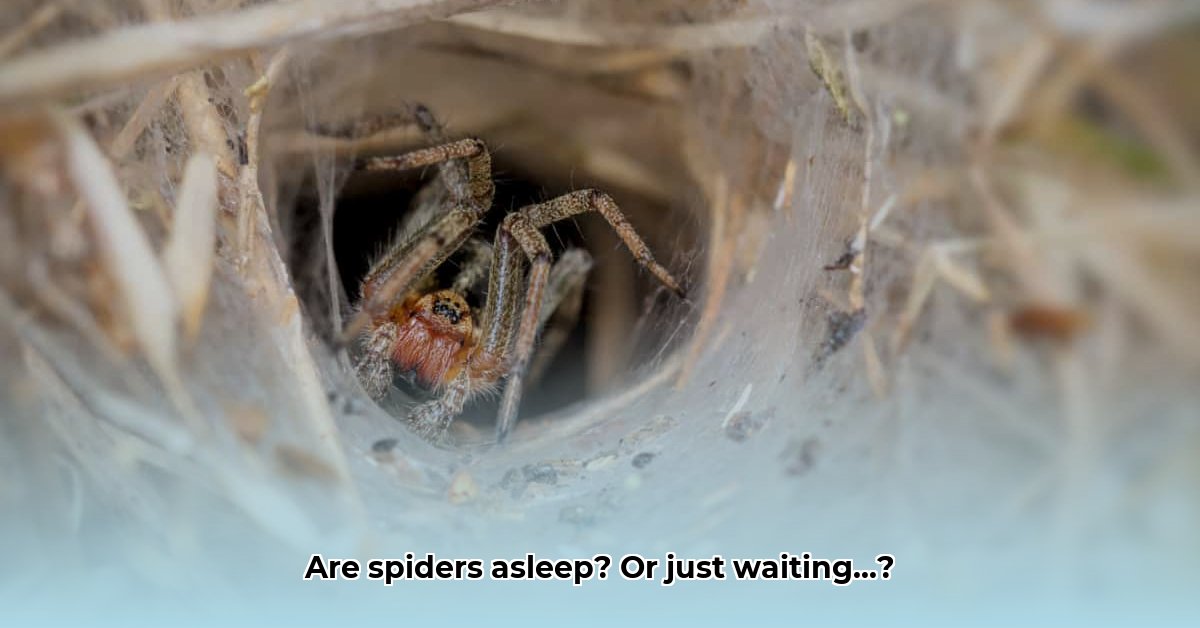Are spiders creatures of the night, lurking in the shadows? Or do they bask in the sun, like tiny eight-legged sunbathers? The answer, as with so much in nature, is more nuanced than a simple yes or no. While many spiders are indeed nocturnal, others embrace the daylight, and some prefer the twilight hours. Let’s delve into the fascinating world of spider activity patterns and uncover the secrets of their daily routines.
Nighttime Prowlers: Exploring Nocturnal Spiders
Many spiders are most active under the cloak of darkness. This nocturnal lifestyle offers several evolutionary advantages. Darkness provides camouflage from diurnal predators like birds and lizards. It also creates the perfect setting for ambushing prey, many of which are also nocturnal. Imagine a wolf spider, a quintessential night stalker, sensing the faintest vibrations of a beetle traversing the leaf litter. Their heightened senses of touch and vibration are particularly well-suited to the stillness of the night. Additionally, cooler nighttime temperatures and reduced humidity can help spiders, especially smaller species, conserve vital moisture.
Sunlight Seekers: Understanding Diurnal Spiders
Contrary to popular belief, not all spiders shun the sunlight. Diurnal spiders, such as the brightly colored jumping spiders, thrive during the day. These tiny hunters possess exceptional vision, allowing them to stalk their prey among flowers and foliage. Their daytime activity grants them access to a different menu of insects and a unique ecological niche. Flower crab spiders, another diurnal group, exemplify camouflage expertise. They blend seamlessly with blossoms, patiently awaiting unsuspecting pollinators.
Twilight Tacticians: Unveiling Crepuscular Spiders
Some spiders prefer the in-between times – the mystical hours of dawn and dusk. These crepuscular spiders, like certain orb-weavers, may capitalize on the activity of both nocturnal and diurnal insects while minimizing their own risk of predation. This clever strategy allows them to exploit a unique temporal window of opportunity.
Spider Rest: Debunking the Myth of Spider Sleep
Spiders don’t sleep in the same way humans do. They don’t experience REM sleep or dream. Instead, they undergo periods of inactivity, or quiescence, during which their metabolism slows and they conserve energy. This downtime is crucial, especially for web-building spiders, allowing them to remain motionless and camouflaged while awaiting prey. Recent research suggests that some spiders, particularly jumping spiders, might exhibit behaviors resembling REM sleep, including leg twitching and rapid eye movements. While this is an area of ongoing study, it raises intriguing questions about the nature of consciousness in these often-overlooked creatures.
The Evolutionary Arms Race and the Impact of Artificial Light
The prevalence of nocturnal behavior in spiders isn’t arbitrary. It’s the product of millions of years of evolution, a continuous interplay between predator and prey. However, human activity, particularly artificial light, is altering the natural rhythms of the night. Light pollution can disrupt spider behavior, impacting their hunting patterns and interactions with both prey and predators. Some studies suggest that artificial lights may attract or repel certain spider species, potentially influencing their distribution and population dynamics. The long-term consequences of these disruptions are still being investigated.
Spider Activity at a Glance
| Activity Pattern | Time of Day | Examples | Advantages |
|---|---|---|---|
| Nocturnal | Night | Wolf spiders, tarantulas, black widows | Prey availability, predator avoidance, moisture conservation |
| Diurnal | Day | Jumping spiders, flower crab spiders | Prey availability, camouflage in sunlight |
| Crepuscular | Dawn and Dusk | Some orb-weavers | Prey availability during insect transitions |
Unanswered Questions and Future Research
While we’ve learned much about spider activity patterns, much remains unknown. Ongoing research continues to shed light on the complexities of spider behavior, including the intricacies of their sensory systems, the influence of environmental factors, and the potential impact of human activities. Future studies may reveal even more surprising details about the fascinating lives of these often-misunderstood creatures.
- Backsplash Colors for White Cabinets: Find Your Perfect Match - November 19, 2025
- Backsplash Ideas for White Cabinets: Find Your Perfect Style - November 18, 2025
- White Tile Backsplash Kitchen: A Classic and Clean Design - November 17, 2025










